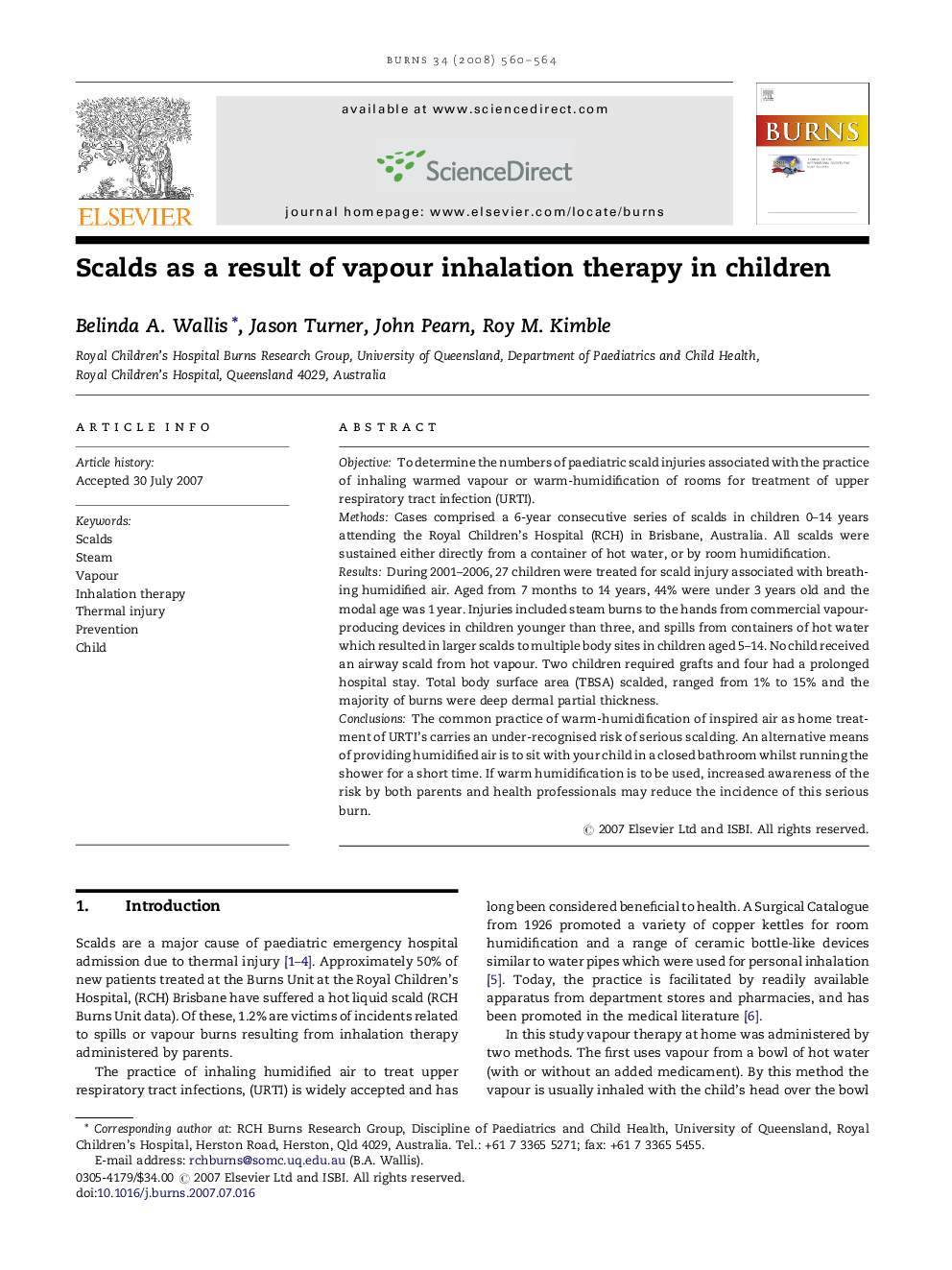| Article ID | Journal | Published Year | Pages | File Type |
|---|---|---|---|---|
| 3105528 | Burns | 2008 | 5 Pages |
ObjectiveTo determine the numbers of paediatric scald injuries associated with the practice of inhaling warmed vapour or warm-humidification of rooms for treatment of upper respiratory tract infection (URTI).MethodsCases comprised a 6-year consecutive series of scalds in children 0–14 years attending the Royal Children's Hospital (RCH) in Brisbane, Australia. All scalds were sustained either directly from a container of hot water, or by room humidification.ResultsDuring 2001–2006, 27 children were treated for scald injury associated with breathing humidified air. Aged from 7 months to 14 years, 44% were under 3 years old and the modal age was 1 year. Injuries included steam burns to the hands from commercial vapour-producing devices in children younger than three, and spills from containers of hot water which resulted in larger scalds to multiple body sites in children aged 5–14. No child received an airway scald from hot vapour. Two children required grafts and four had a prolonged hospital stay. Total body surface area (TBSA) scalded, ranged from 1% to 15% and the majority of burns were deep dermal partial thickness.ConclusionsThe common practice of warm-humidification of inspired air as home treatment of URTI's carries an under-recognised risk of serious scalding. An alternative means of providing humidified air is to sit with your child in a closed bathroom whilst running the shower for a short time. If warm humidification is to be used, increased awareness of the risk by both parents and health professionals may reduce the incidence of this serious burn.
